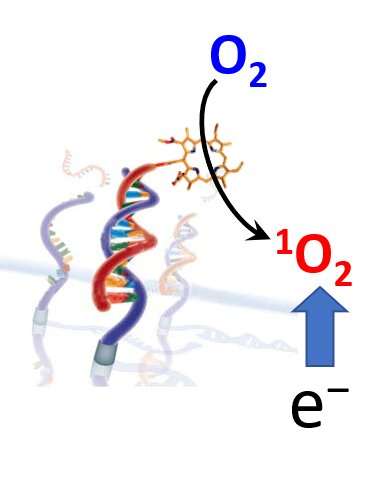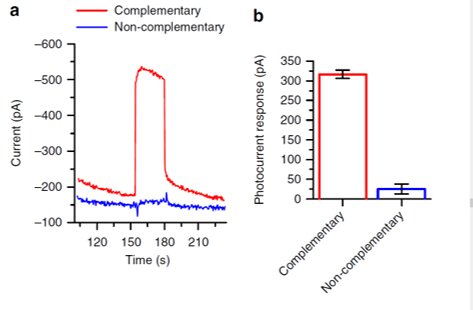Singlet oxygen-based photoelectrochemical DNA sensors
Photoelectrochemical DNA (bio)sensors combine advantages of electrochemical and optical sensors such as high sensitivity, rapid response, simplicity, ease to operate and low cost. Our original strategy relies on photosensitizers generating singlet oxygen (1O2) that results in the photocurrent response due to either direct reduction at an electrode or oxidation of a redox reporter followed by electrochemical regeneration of the reporter at an electrode. Such PSs can be used as molecular labels coupled to specific DNA sequences similar to fluorescent labels. This makes possible creation of highly sensitive and cost-efficient photoelectrochemical DNA sensors.

Screening these labeled systems such as nucleic acid sequences modified with PS can replace enzyme-labeled (for example, HRP-labelled) reagents and functions by only switching the light on/off whenever required for detecting specific DNA/RNA sequences. With an intrinsic background elimination feature by switching the light ON/OFF, this photo-electrochemical strategy provides enhanced sensitivity
